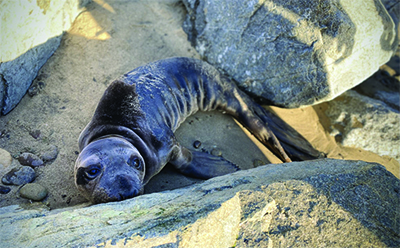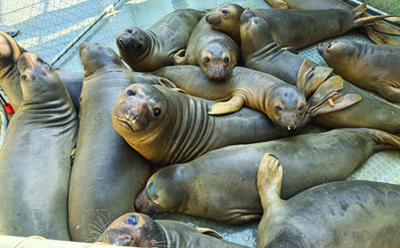Highlights from a Wild 2025 Marine Stranding Season
By Heather Henderson, Marine Program Manager
2025 will go down in the record books as a year of many challenges. Yet, with challenges come growth and shining moments of success! Things started off slower than in 2024, but that quickly changed. By the second week of January, devastating wildfires forced us to evacuate. Response operations shifted to a remote staging location.
In mid-February, just 3-weeks later, the region was hit by the longest (13 weeks) and most severe harmful algal bloom (HAB) recorded in Southern California. This event exposed thousands of California Sea Lions and Common Dolphins to two concurrent neurotoxins (domoic acid and saxitoxin) wreaking havoc on the health of our native marine mammals. Here is a look at some of the notable moments.
Over 3,500 calls were fielded by our marine mammal team, resulting in 500 responses. These included 359 investigations involving eight different marine mammal species and 141 responses related to thirteen species of marine birds. To make this possible, more than 11,700 hours were dedicated to the efforts, including over 5,000 staff hours and 6,700 volunteer hours.
We are proud to report that this season, 95% of all Northern Elephant Seal patients were released, and 72% of all rescued pinnipeds were released. Additionally, we were able to collect important morphometric and health data from the postmortem exams of 105 patients.
Northern Elephant Seal (#25-91)
Northern Elephant Seals in care.
California Sea Lion patient release day!
Our strict safety protocols resulted in zero injury related animal bites to our team. Exhausted yet thankful for the decrease in strandings, we used the fall months to recover and reflect. We carefully evaluated the challenges we faced, turning them into actionable updates to our protocols.
Successfully rehabilitated patients like #25-91 and #25-242 are celebrated! Northern Elephant Seal pup #25-91 was rescued from the rocks minutes before the tide would wash her away. She weighed only 61 lbs., less than at birth. After learning to forage and in good body condition, #25-91 returned to her ocean home, a robust 167 lbs.
California Sea Lion #25-242 stranded at the height of the HAB crisis. Our team monitored and stabilized her on the beach for 5 days before a safe extraction could be performed. In care, her seizures persisted, leading us to fear that her brain damage was too severe to address. Never giving up, we employed a new treatment approach which pulled her through. Watching #25-242 race towards the ocean, healthy against the odds, highlights the power of care in action!



